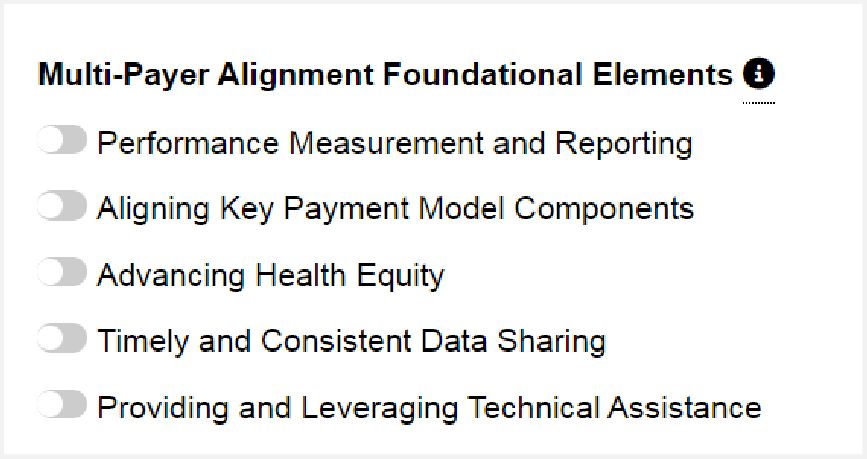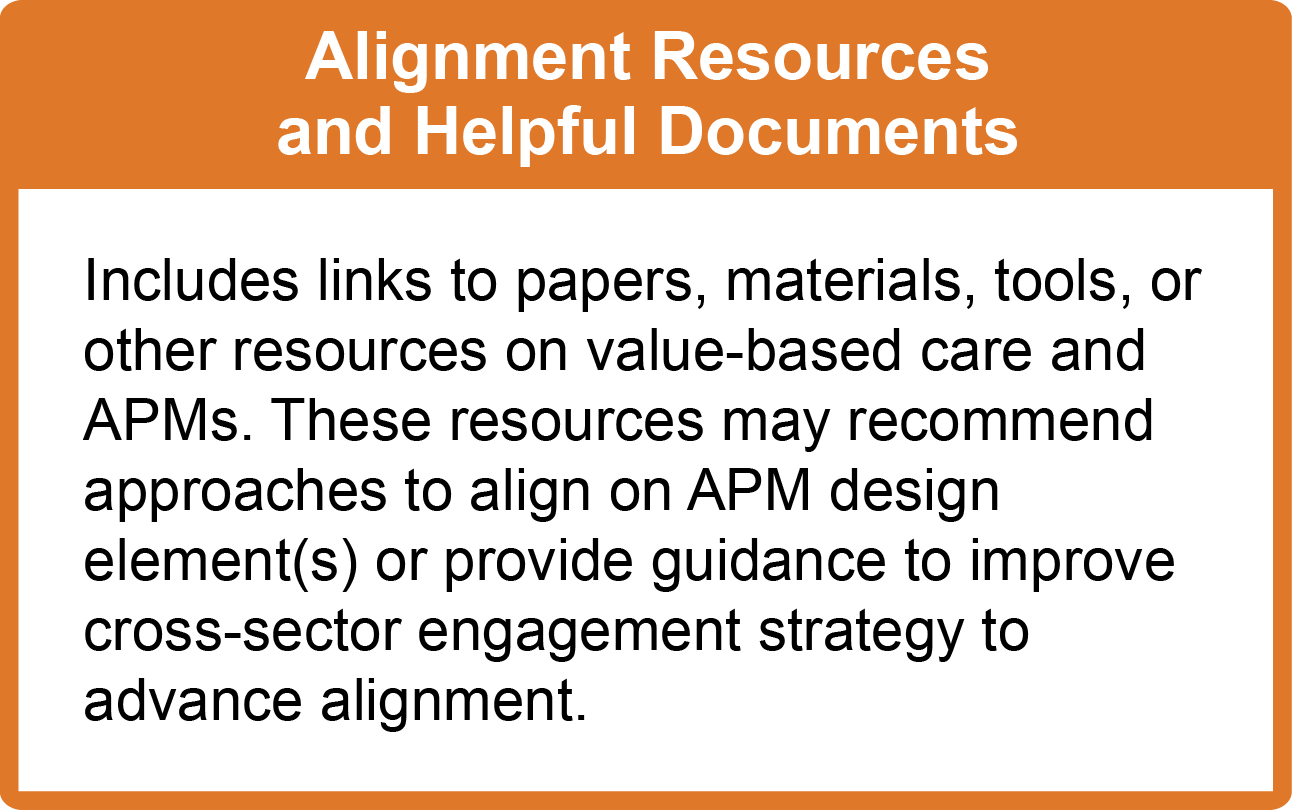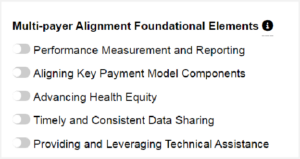Developing APMs to Better Serve Populations Most in Need
- May 31, 2016
- Posted by: Health Care Payment Learning & Action Network
- Categories: Committed Partner Interview, Interview

Developing APMs to Better Serve Populations Most in Need
 “About 40 percent of our membership is touched in some way by a value-based program – and we plan to reach 50 percent by the end of 2016.” — Dr. Andrea Gelzer
“About 40 percent of our membership is touched in some way by a value-based program – and we plan to reach 50 percent by the end of 2016.” — Dr. Andrea Gelzer
AmeriHealth Caritas is part of the Independence Health Group in partnership with Blue Cross Blue Shield of Michigan. AmeriHealth Caritas is one of the nation’s leaders in health care solutions for those most in need. Operating in 18 states and the District of Columbia, AmeriHealth Caritas serves more than 5.9 million Medicaid, Medicare, and CHIP members through its integrated managed care products, pharmaceutical benefit management, specialty pharmacy services, behavioral health services, and other administrative services. Headquartered in Philadelphia, AmeriHealth Caritas is a mission-driven organization with more than 30 years of experience serving low-income and chronically ill populations.
CAMH talked with Andrea D. Gelzer, MD, senior vice president and corporate chief medical officer of AmeriHealth Caritas, to gain her perspective on alternative payment models and the LAN initiative. Dr. Gelzer is responsible for overseeing medical management strategy, medical policy development, quality management, corporate provider network strategy, and medical informatics for all AmeriHealth Caritas health plans. The company is a LAN Committed Partner, and Dr. Gelzer is a member of the LAN’s Alternative Payment Model Framework & Progress Tracking Work Group. She also chairs the Chief Medical Officer Leadership Council of America’s Health Insurance Plans (AHIP), actively participates in the Core Quality Measure Collaborative, and is a member of the Technical Expert Panel (TEP) for the Assessment of Impact of CMS Quality Measures.
We found out about the LAN through our work with AHIP. The LAN’s goals were well-aligned with ours at AmeriHealth Caritas, so we pledged to be a Committed Partner and attended the kick-off events at the White House and the U.S. Department of Health and Human Services (HHS) in March 2015.
My interest in APMs dates back to 2002. I was involved in the early days of the Ambulatory Care Quality (AQA) Alliance – a multi-stakeholder effort focused on gaining agreement on a strategy for measuring and reporting performance at the physician level.
AmeriHealth Caritas initially developed pay-for-performance programs, primarily for our Pennsylvania-based health plans, and quickly learned that alignment among providers, state governments, and Medicaid managed care organizations (MCOs) is critical.
In 2010, AmeriHealth Caritas launched its PerformPlus® suite of value-based incentive programs for participating primary care and specialist physicians, hospitals and integrated delivery systems, and Federally-Qualified Health Centers. Our incentive programs, based on LAN’s APM Framework Category 2, are designed to reward providers for timely, appropriate care and positive patient outcomes. PerformPlus® programs are also aligned with efforts in the Medicare and commercial markets. In some markets, our PerformPlus® program has advanced to the LAN’s APM Framework Category 3A, APMs built on fee-for-service architecture. Assessing provider readiness and working together in partnership is how we’ve been able to successfully transition providers from a Category 2 to 3A APM. Today, about 40 percent of our membership is touched in some way by a value-based PerformPlus® program – and we plan to reach 50 percent by the end of 2016.
Eventually, we want to move the vast majority of our participating providers into alternative payment structures. However, because we work primarily with Medicaid in multiple states, our ability to accelerate participation depends on how progressive the Medicaid market is in each state. Some states, offer quality-based incentives and/or withholds to encourage the adoption of APMs. Other states include specific goals for APM adoption and market penetration in contracts with Medicaid MCOs. It’s still too soon to evaluate which approach is most successful.
It’s a gradual process. As we look at the APM Framework, we start with a Category 2 quality incentive program. Program participants have no downside risk but are rewarded for improving quality and certain utilization metrics, such as preventable emergency room visits. Once this works successfully for participants, we try to move them into a shared savings program, Category 3. Our greatest success with APMs has been with integrated delivery systems that have critical patient volume, and the infrastructure and resources to support practice transformation. We do not yet have anyone in Category 4, but our goal is to do so by the end of the year.
It’s important that APMs also align with provider’s internal quality goals for their practice or health system – and health plans must remain flexible. We collaborate with our provider partners to reach consensus on a set of quality measures and develop a customized program that’s a win-win for everyone. Our collaborative approach has resulted in multi-year shared savings arrangements with multiple providers and demonstrated improved quality outcomes.
We have seen improvements in both quality and efficiency measures from our provider partners. Measures such as preventable admissions, preventable readmissions, and low acuity emergency room utilization have shown improvement, in addition to quality measures for post-partum and prenatal care. Payment models that only offer financial incentives to deliver care within a cost target could have unintended consequences for patients. Unfortunately, quality metrics have not yet caught up with financial alignment, particularly in gauging the effectiveness of treating individuals with chronic conditions and ensuring we’re optimizing outcomes for these patients. I think we’ll have a lag period of at least three to five years before we get it right.
I believe that we will see improved outcomes for individuals with chronic diseases. I believe we will see more proactive patient engagement in health care across the board. And I think these achievements will not only be driven by APMs but also by big data and predictive modeling opportunities that we’re just beginning to realize. The LAN is a powerful catalyst in accelerating our path forward.

















 Emily DuHamel Brower, M.B.A., is senior vice president of clinical integration and physician services for Trinity Health. Emphasizing clinical integration and payment model transformation, Ms. Brower provides strategic direction related to the evolving accountable healthcare environment with strong results. Her team is currently accountable for $10.4B of medical expense for 1.6M lives in Medicare Accountable Care Organizations (ACOs), Medicare Advantage, and Medicaid and Commercial Alternative Payment Models.
Emily DuHamel Brower, M.B.A., is senior vice president of clinical integration and physician services for Trinity Health. Emphasizing clinical integration and payment model transformation, Ms. Brower provides strategic direction related to the evolving accountable healthcare environment with strong results. Her team is currently accountable for $10.4B of medical expense for 1.6M lives in Medicare Accountable Care Organizations (ACOs), Medicare Advantage, and Medicaid and Commercial Alternative Payment Models. Mr. James Sinkoff is the Deputy Executive Officer and Chief Financial Officer for Sun River Health (formerly known as Hudson River HealthCare), and the Chief Executive Officer of Solutions 4 Community Health (S4CH); an MSO serving FQHCs and private physician practices.
Mr. James Sinkoff is the Deputy Executive Officer and Chief Financial Officer for Sun River Health (formerly known as Hudson River HealthCare), and the Chief Executive Officer of Solutions 4 Community Health (S4CH); an MSO serving FQHCs and private physician practices. Victor is the Chief Medical Officer for TennCare, Tennessee’s Medicaid Agency. At TennCare, Victor leads the medical office to ensure quality and effective delivery of medical, pharmacy, and dental services to its members. He also leads TennCare’s opioid epidemic strategy, social determinants of health, and practice transformation initiatives across the agency. Prior to joining TennCare, Victor worked at Evolent Health supporting value-based population health care delivery. In 2013, Victor served as a White House Fellow to the Secretary of Health and Human Services. Victor completed his Internal Medicine Residency at Emory University still practices clinically as an internist in the Veteran’s Affairs Health System.
Victor is the Chief Medical Officer for TennCare, Tennessee’s Medicaid Agency. At TennCare, Victor leads the medical office to ensure quality and effective delivery of medical, pharmacy, and dental services to its members. He also leads TennCare’s opioid epidemic strategy, social determinants of health, and practice transformation initiatives across the agency. Prior to joining TennCare, Victor worked at Evolent Health supporting value-based population health care delivery. In 2013, Victor served as a White House Fellow to the Secretary of Health and Human Services. Victor completed his Internal Medicine Residency at Emory University still practices clinically as an internist in the Veteran’s Affairs Health System. Dr. Brandon G. Wilson, DrPH, MHA (he, him, his) joined Community Catalyst as the Director of the Center for Consumer Engagement in Health Innovation, where he leads the Center in bringing the community’s experience to the forefront of health systems transformation and health reform efforts, in order to deliver better care, better value and better health for every community, particularly vulnerable and historically underserved populations. The Center works directly with community advocates around the country to increase the skills and power they have to establish an effective voice at all levels of the health care system. The Center collaborates with innovative health plans, hospitals and providers to incorporate communities and their lived experience into the design of systems of care. The Center also works with state and federal policymakers to spur change that makes the health system more responsive to communities. And it provides consulting services to health plans, provider groups and other health care organizations to help them create meaningful structures for engagement with their communities.
Dr. Brandon G. Wilson, DrPH, MHA (he, him, his) joined Community Catalyst as the Director of the Center for Consumer Engagement in Health Innovation, where he leads the Center in bringing the community’s experience to the forefront of health systems transformation and health reform efforts, in order to deliver better care, better value and better health for every community, particularly vulnerable and historically underserved populations. The Center works directly with community advocates around the country to increase the skills and power they have to establish an effective voice at all levels of the health care system. The Center collaborates with innovative health plans, hospitals and providers to incorporate communities and their lived experience into the design of systems of care. The Center also works with state and federal policymakers to spur change that makes the health system more responsive to communities. And it provides consulting services to health plans, provider groups and other health care organizations to help them create meaningful structures for engagement with their communities. Tamara Ward is the SVP of Insurance Business Operations at Oscar Health, where she leads the National Network Contracting Strategy and Market Expansion & Readiness. Prior to Oscar she served as VP of Managed Care & Network Operations at TriHealth in Southwest Ohio. With over 15 years of progressive health care experience, she has been instrumental driving collaborative payer provider strategies, improving insurance operations, and building high value networks through her various roles with UHC and other large provider health systems. Her breadth and depth of experience and interest-based approach has allowed her to have success solving some of the most complex issues our industry faces today. Tam is passionate about driving change for marginalized communities, developing Oscar’s Culturally Competent Care Program- reducing healthcare disparities and improving access for the underserved population. Tamara holds a B.A. from the University of Cincinnati’s and M.B.A from Miami University.
Tamara Ward is the SVP of Insurance Business Operations at Oscar Health, where she leads the National Network Contracting Strategy and Market Expansion & Readiness. Prior to Oscar she served as VP of Managed Care & Network Operations at TriHealth in Southwest Ohio. With over 15 years of progressive health care experience, she has been instrumental driving collaborative payer provider strategies, improving insurance operations, and building high value networks through her various roles with UHC and other large provider health systems. Her breadth and depth of experience and interest-based approach has allowed her to have success solving some of the most complex issues our industry faces today. Tam is passionate about driving change for marginalized communities, developing Oscar’s Culturally Competent Care Program- reducing healthcare disparities and improving access for the underserved population. Tamara holds a B.A. from the University of Cincinnati’s and M.B.A from Miami University.


 Dr. Peter Walsh joined the Colorado Department of Health Care Policy and Financing as the Chief Medical Officer on December 1, 2020. Prior to joining HCPF, Dr. Walsh served as a Hospital Field Representative/Surveyor at the Joint Commission, headquartered in Oakbrook Terrace, Illinois.
Dr. Peter Walsh joined the Colorado Department of Health Care Policy and Financing as the Chief Medical Officer on December 1, 2020. Prior to joining HCPF, Dr. Walsh served as a Hospital Field Representative/Surveyor at the Joint Commission, headquartered in Oakbrook Terrace, Illinois.









